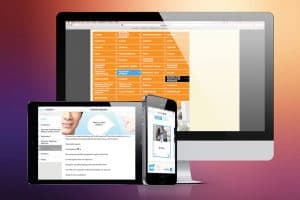My colleagues frequently debate the growth and application of online education. Those of us who are passionate about high-quality online learning are often surprised that anyone can be reluctant to consider—or even opposed to developing—a fully online course.
Whether we laud its growth or fear its presence, online learning is here to stay. The Babson Survey Research Group, in its 2018 report, found that enrollment for distance education students has steadily increased for the past 14 years, with nearly 69% of all distance education students now enrolled in public institutions.
Distance or online education in K–12 settings is also common. Students consistently need advanced placement courses, elective college courses, credit recovery, homebound placements, and homeschooling, and this has boosted online learning in K–12 school systems in all 50 states. In addition, the growing popularity of technologies such as Schoology, Edmodo, and Google Classroom means that even in face-to-face K–12 classrooms, students must develop a comfort level with online coursework in order to fully experience academic success.
For library professionals, this translates into making sure we are involved in multiple learning settings: face-to-face, online, hybrid, blended, flipped, and any number of other classroom combinations. Unfortunately, little evidence exists that LIS coursework prepares candidates to design and assess online learning. Many librarians pursue additional degrees, certification, or professional development in instructional design, trying to keep up with an ever-changing list of tools, technologies, and institutional regulations.
Researchers have also generated a body of work that contextualizes librarianship in the world of online learning, with a specific focus on the librarian’s role as instructional designer and instructor. Articles from 2005 to the present in the Journal of Library and Information Services in Distance Learning indicate a shift in librarians’ focus from merely providing resources to collaboration and instruction.
Even in face-to-face K–12 classrooms, students must develop a comfort level with online coursework.
A parallel evolution has taken place among school library researchers. In 2017, Stephanie A. Jones, Panne Andrea Burke, and I surveyed 85 school library preparation programs in 38 states to find out how they trained candidates to deliver instruction in fully online settings. This national study concluded that while the preparation program coursework did not directly address fully online school librarians, graduate programs acknowledged their importance by emphasizing technology-enabled learning, web design, and the teaching of digital literacy. K–12 students who have access to online learning can develop skill sets that will become helpful after graduation from high school.
Librarians are designing online classes, collaborating with professors, embedding into online coursework, and developing online resources. Brenda Boyer, librarian at Kutztown (Pa.) Area School District, developed a robust virtual school library that plays a central role in her high school’s online instruction. Geography Librarian Amanda Hornby at University of Washington Libraries developed an online tutorial and research guide for a geography course to help students navigate resources relevant to their research projects. Librarians at the University of Texas at El Paso are collaborating with faculty to integrate information literacy into course content.
We should examine the affordability of technology tools and the learning needs librarians are tasked with addressing. Ultimately, we need to meet our students where they are—and many of them are accessing content and enjoying rich learning experiences online.


